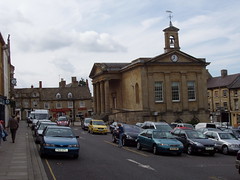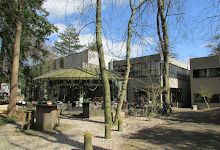Archive number: 19
Title: Carnival Fugue
Main Album: Focus 3
Track number: 4
Genre: Jazz Rock Instrumental
Studio: Olympic Studios 'B', 117 Church Road, Barnes, London SW13 9HL
Length: 06' 04"
Composer: Thijs van Leer
Musicians: Jan Akkerman – Electric guitars (Gibson Les Paul Customs?), acoustic guitar; Thijs van Leer – Hammond organ, piano, piccolo; Bert Ruiter - Bass; Pierre Van Der Linden – Drums
Producer: Mike Vernon
Engineer: George Chkiantz
Label: LP – Imperial, Polydor, Sire CD – Capitol, EMI-Bovema, IRS, Red Bullet, JVC Victor
Date of recording/release: July 1972/November 1972, 1975 CD - 1988, 1993, 2001, 2002, 2004
Alternative version: There does not appear to be a different version of this anywhere but some sections were later used by van Leer in quite a different (more obviously fugal) way on the 1981 Pedal Point album Dona Nobis Pacem (in the first Sanctus).
Notes: The piece can be divided into four sections. The first (00:00-01:30) is slow and solemn and features piano, electric guitar and very sparing drum fills using floor toms and cymbals. The piece begins just with piano but is complimented by laid back, meandering guitar lines. The music evokes the lack of activity before a carnival march starts. There is a four second gap between the first and second section (00:31-00:34). The second section (01:35-02:55) features piano again but now with acoustic guitars from the start and (from 00:49) bass and drums. This brisker section features rising scales and evokes perhaps the readying of carnival marchers. This leads into a third even quicker, more jazzy (or contrapuntal) transitional section (02:56-03:29) on the same instruments. By now the whole troupe is more than ready for the off and the final section is a lively 'carnival' style one, Caribbean perhaps, in its feel (03:30-06:04). It features piccolo, organ, electric guitar, bass and drums. An infectious joy permeates as the music eventually fades, the revellers, as it were, passing into the distance. Overdubbing has been used to enhance the piccolo lines and contrasting guitar lines come from the two channels at certain points.
A note on the term fugue (from Wikipedia)
The English term fugue originates in the 16th Century and is from French or Italian fuga, which itself is from Latin and is related to both fugere (to flee) and fugare (to chase). The adjectival form is fugal. Variants include fughetta (lit a small fugue) and fugato (passage in fugal style within another work that is not a fugue).
In music, a fugue is a type of contrapuntal composition or technique of composition for a fixed number of parts, normally referred to as "voices", irrespective of whether the work is vocal or not. In the Middle Ages, the term was widely used to denote any works in canonic style; by the Renaissance, it came to denote specifically imitative works. Since the 17th Century the term has described what is commonly regarded as the most fully developed procedure of imitative counterpoint. A fugue opens with one main theme (subject) which then sounds successively in each voice in imitation; when each voice has entered, the exposition is complete; usually this is followed by a connecting passage (episode) developed from previously heard material; further "entries" of the subject then are heard in related keys. Episodes and entries are usually alternated until the "final entry" of the subject, by which point the music has returned to the opening key, or tonic, which is often followed by closing material, the coda. In this sense, fugue is a style of composition, rather than a fixed structure. Though there are certain established practices, in writing the exposition for example, composers approach the style with varying degrees of freedom and individuality.
The form evolved from several earlier types of contrapuntal compositions, such as imitative ricercars, capriccios, canzonas and fantasias. Middle and late Baroque composers such as Buxtehude (1637–1707) and Pachelbel (1653–1706) contributed greatly to the development of the fugue, and the form reached ultimate maturity in the works of Bach (1685–1750). With the decline of sophisticated contrapuntal styles at the end of the baroque period, the fugue's popularity as a compositional style waned, eventually giving way to Sonata form.
Nevertheless, composers from the 1750s to the present day continue to write and study fugue for various purposes; they appear in the works of Mozart (eg Kyrie Eleison, Requiem in D min) and Beethoven (eg end of Credo, Missa Solemnis) and composers such as Reicha (1770–1836) and Shostakovich (1906–1975) wrote cycles of fugues.























No comments:
Post a Comment